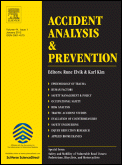
This research aims to highlight the link between weather conditions and road accident risk at an aggregate level and on a monthly basis, in order to improve road safety monitoring at a national level. It is based on some case studies carried out in Work Package 7 on “Data analysis and synthesis” of the EU-FP6 project “SafetyNet – Building the European Road Safety Observatory”, which illustrate the use of weather variables for analysing changes in the number of road injury accidents. Time series analysis models with explanatory variables that measure the weather quantitatively were used and applied to aggregate datasets of injury accidents for France, the Netherlands and the Athens region, over periods of more than twenty years. The main results reveal significant correlations on a monthly basis between weather variables and the aggregate number of injury accidents, but the magnitude and even the sign of these correlations vary according to the type of road (motorways, rural roads or urban roads). Moreover, in the case of the interurban network in France, it appears that the rainfall effect is mainly direct on motorways – exposure being unchanged, and partly indirect on main roads–as a result of changes in exposure. Additional results obtained on a daily basis for the Athens region indicate that capturing the within-the-month variability of the weather variables and including it in a monthly model highlights the effects of extreme weather. Such findings are consistent with previous results obtained for France using a similar approach, with the exception of the negative correlation between precipitation and the number of injury accidents found for the Athens region, which is further investigated. The outlook for the approach and its added value are discussed in the conclusion.
| ID | pj75 |
| Manuscript | |
| DOI | |
| Tags | accident analysis, statistical modelling, weather conditions |







